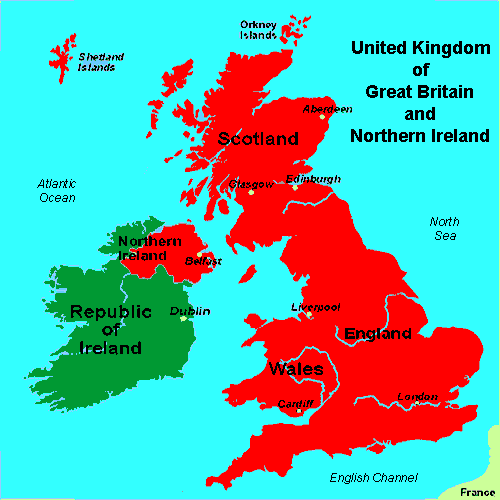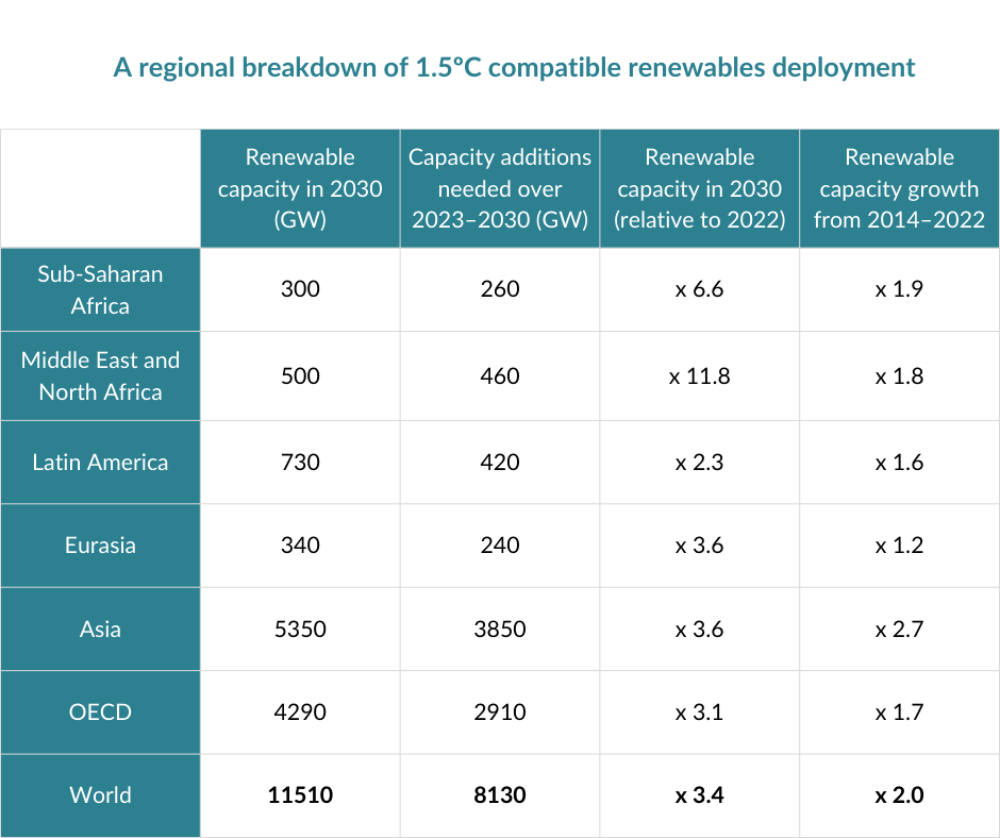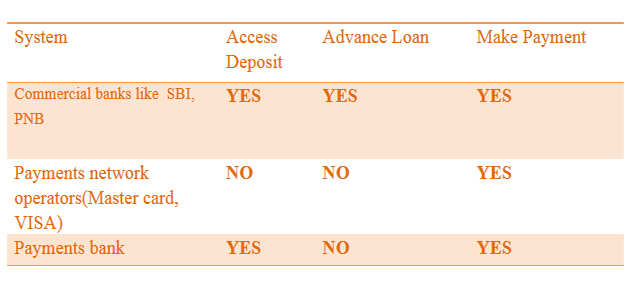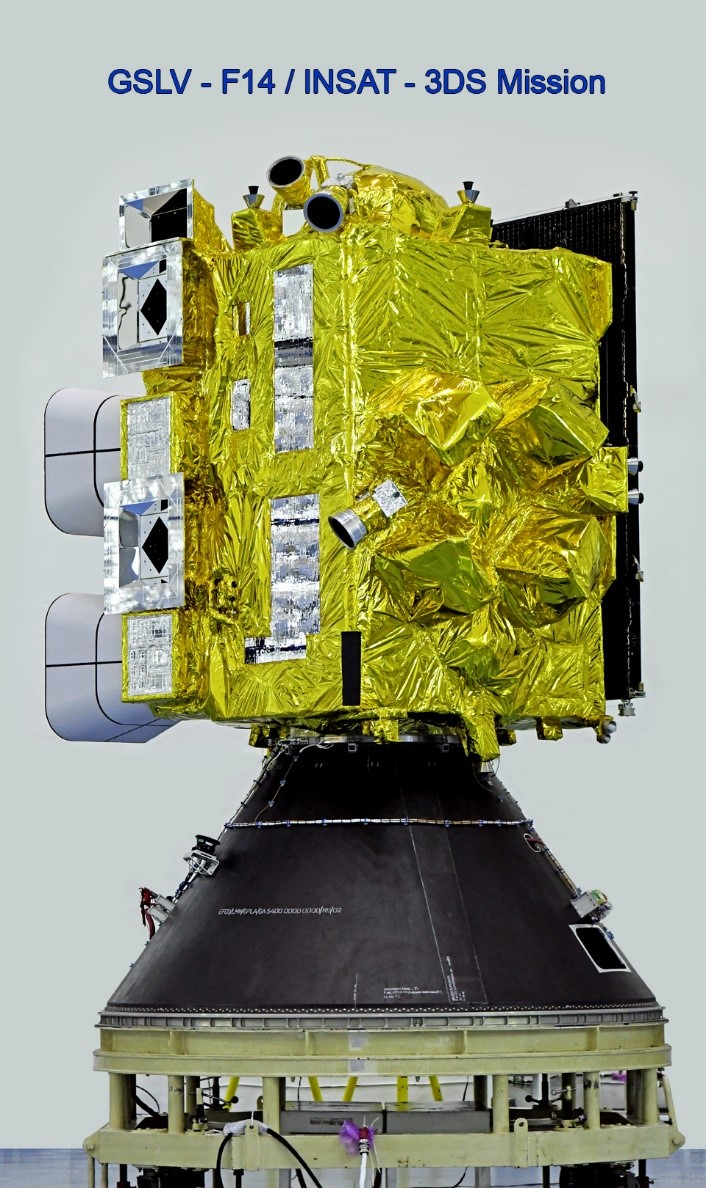Governance
Using Green Hydrogen in the Steel Sector
For Prelims: National Green Hydrogen Mission, Steel Sector, Green Hydrogen, Decarbonization.
For Mains: National Green Hydrogen Mission, Government policies and interventions for development in various sectors and issues arising out of their design and implementation.
Why in News?
Recently, the Ministry of New and Renewable Energy has issued guidelines, named “Scheme Guidelines for Implementation of Pilot Projects for use of Green Hydrogen in the Steel Sector under the “National Green Hydrogen Mission”.
- It aims to replace fossil fuels and fossil fuel-based feedstock with Green Hydrogen and its derivatives.
- The Scheme will be implemented till FY 2029-30.
What are the Key Highlights of the Guidelines?
- Thrust Areas:
- Three areas have been identified as thrust areas for the pilot projects in the steel sector. These are:
- Use of Hydrogen in Direct Reduced Ironmaking process
- Use of Hydrogen in Blast Furnace
- Substitution of fossil fuels with Green Hydrogen in a gradual manner.
- The scheme will also support pilot projects involving any other innovative use of hydrogen for reducing carbon emissions in Iron and Steel Production.
- Three areas have been identified as thrust areas for the pilot projects in the steel sector. These are:
- Blending Approach:
- Steel plants are encouraged to begin by blending a small percentage of green hydrogen in their processes and gradually increase the blending proportion as cost economics improves and technology advances.
- Incorporation in New Plants:
- Upcoming steel plants are expected to be capable of operating with green hydrogen to participate in future global low-carbon steel markets.
- The scheme also supports greenfield projects aiming at 100% green steel.
What is Green Hydrogen?
- About:
- Hydrogen is a key industrial fuel that has a variety of applications including the production of ammonia (a key fertilizer), steel, refineries and electricity.
- Hydrogen is the most abundant element in the universe. But pure, or the elemental hydrogen, is very scarce. It almost always exists in compounds like with oxygen to form H2O or water.
- But when electric current is passed through water, it splits it into elemental oxygen and hydrogen through electrolysis. And if the electricity used for this process comes from a renewable source like wind or solar then the hydrogen thus produced is referred to as green hydrogen.
- Colors attached to hydrogen indicate the source of electricity used to derive the hydrogen molecule. For instance, if coal is used, it is referred to as brown hydrogen.
- Need for Producing Green Hydrogen:
- Hydrogen is a great source of energy because of its high energy content per unit of weight, which is why it is used as rocket fuel.
- Green hydrogen, in particular, is one of the cleanest sources of energy, with close to zero emissions. It can be used in fuel cells for cars or in energy-guzzling industries like fertilizers and steel manufacturing.
- Countries across the world are working on building green hydrogen capacity, as it can ensure energy security and also help in cutting carbon emissions.
- Green hydrogen has become a global buzzword, especially as the world is facing its biggest-ever energy crisis and the threat of climate change is turning into a reality.
- Initiatives Related to Renewable Energy:
What are the Challenges in Adopting Green Hydrogen in Steel Plants?
- Technological Adaptation:
- Transitioning from traditional steelmaking processes to hydrogen-based methods requires significant technological adaptation. Existing steel plants may need to undergo substantial modifications or even complete redesign to accommodate hydrogen as a primary reducing agent.
- Infrastructure Requirements:
- The production, storage, and transportation of hydrogen necessitate significant infrastructure development. Establishing hydrogen production facilities, storage tanks, and distribution networks adds complexity and cost to steel plant operations.
- Cost Implications:
- Adopting hydrogen-based processes may incur higher initial capital costs compared to conventional methods. Investment in new equipment, infrastructure, and technology, as well as ongoing operational expenses, can pose financial challenges for steel producers, especially in the face of fluctuating market conditions.
- Supply Chain Constraints:
- Ensuring a reliable supply chain of hydrogen, including sourcing raw materials and maintaining consistent production levels, is crucial for uninterrupted steel plant operations. Dependence on external suppliers and potential supply chain disruptions may present logistical challenges.
- Carbon Capture and Storage (CCS):
- Although hydrogen-based steel production offers the potential for significant carbon emissions reductions, capturing and storing CO2 emissions generated during the process remains a challenge.
- Developing cost-effective CCS technologies compatible with steel plant operations is critical for achieving net-zero emissions targets.
What are the Efforts to Promote Green Steel Production?
- International Collaborations:
- At the 28th Conference of Parties to the United Nations Framework Convention on Climate Change, India announced its partnership with Sweden under the LEAD-IT initiative which had a focus on industrial Decarbonisation, specially the steel sector.
- Swedish company SSAB was the first globally to produce steel through hydrogen back in 2018.
- Yet another Swedish company, H2-Green Steel, is also planning to roll out its first batch of green steel using hydrogen by 2025.
- Similar initiatives are being taken by Nippon Steel in Japan and other competitors in France and Germany.
- At the 28th Conference of Parties to the United Nations Framework Convention on Climate Change, India announced its partnership with Sweden under the LEAD-IT initiative which had a focus on industrial Decarbonisation, specially the steel sector.
- Domestic Companies:
- Domestically, companies like Tata Steel and ArcelorMittal Nippon Steel India have started taking initiatives towards using hydrogen.
- In January 2024, ArcelorMittal Nippon Steel India signed a memorandum of understanding (MoU) with the Maharashtra government, proposing to establish a 6 million tonnes per annum green steel plant in Maharashtra that plans to use hydrogen instead of coal.
- Government Schemes:
- Perform, Achieve and Trade (PAT) Scheme:
- PAT Scheme incentivizes the steel industry to reduce energy consumption.
- Pradhan Mantri Urja Ganga Project to promote the manufacturing of Green steel.
- Steel Scrap Recycling Policy, 2019:
- Steel Scrap Recycling Policy, 2019 enhances the availability of domestically generated scrap to reduce the consumption of coal in steel making.
- Perform, Achieve and Trade (PAT) Scheme:
Way Forward
- Develop Supportive Policies and Regulations: India needs to develop a comprehensive and coherent policy framework for green hydrogen, such as setting targets, providing incentives, creating standards, and enforcing regulations. India can also learn from the best practices and experiences of other countries, such as Germany, France, and Sweden.
- Implement Pilot Projects and Scale-up: India needs to implement pilot projects using green hydrogen in steel plants, such as blending hydrogen with natural gas or coal, using hydrogen in the direct reduced ironmaking process, and using hydrogen in blast furnaces.
- These projects can help demonstrate the feasibility, viability, and benefits of green hydrogen, as well as identify the challenges and gaps.
- Based on the learnings and outcomes of these projects, India can scale up the adoption of green hydrogen in steel plants.
- Increase Investment and Collaboration: India needs to increase public and private investment in green hydrogen projects, as well as foster collaboration among various stakeholders, such as government, industry, academia, and civil society. India can also leverage international partnerships and initiatives, such as the International Solar Alliance and Mission Innovation.
- Enhance R&D and Innovation: India needs to enhance its R&D and innovation capabilities in the field of green hydrogen, such as establishing dedicated centers of excellence, supporting startups and entrepreneurs, and facilitating technology transfer and diffusion.
Supplementary Readings: Green Hydrogen: Enabling Measures Roadmap for Adoption in India, National Green Hydrogen Mission, Pitfalls of India's Green Hydrogen Move
UPSC Civil Services Examination Previous Year Question (PYQ)
Q. Hydrogen fuel cell vehicles produce one of the following as “exhaust” (2010)
(a) NH3
(b) CH4
(c) H2O
(d) H2O2
Ans: (c)
Exp:
- A fuel cell is a device that converts chemical energy (energy stored in molecular bonds) into electrical energy.
- It uses Hydrogen gas (H2) and Oxygen gas (O2) as fuel and the products of the reaction in the cell are water (H2O), electricity, and heat.
- This is a big improvement over internal combustion engines, coal-burning power plants, and nuclear power plants, all of which produce harmful byproducts. Therefore, option (c) is the correct answer.
International Relations
Northern Ireland Conflict
For Prelims: Northern Ireland Conflict, Republicans and the Unionists, First World War, Good Friday Agreement.
For Mains: Northern Ireland Conflict, International Relations and Implications for India.
Why in News?
Recently, a pro-Irish unity politician made history by becoming the first Nationalist First Minister of Northern Ireland amid political deadlock reflecting the region's complex divisions.
- Rooted in its troubled past, the move signals a potential shift towards reconciliation and inclusive governance.
How did Northern Ireland Come into Being?
- The Troubles:
- Northern Ireland was the site of a 30-year civil war (1968-1998) known as ‘The Troubles’ between the Republicans and the Unionists, which killed over 3,500 people.
- It also had a religious aspect to it with the Republicans being mostly Catholic and the Unionists being largely Protestants.
- Northern Ireland was formerly part of the Ulster province, which lies to the north of modern-day Ireland.
- Conflict Between Protestants and the Irish Catholics:
- Conflict between the Protestants and the Irish Catholics goes all the way back to 1609, when King James I started an official policy of migration wherein people from England and Scotland were encouraged to move to Ulster to work in his various plantations there.
- The religious war that was being waged in much of Europe at the time, between the Protestants and the Catholics, made its presence felt in Ulster as well.
- However, a much stronger resistance was brewing. Ireland at the time was under the rule of England.
- Resistance Against the Colonial English Rule:
- The growing resistance against colonial English rule, especially after the Potato Famine of 1845 where over 1 million Irish people died due to disease and starvation, cemented these sectarian and religious differences.
- Finally, in 1916, in the middle of the First World War, during Easter week, Ireland rose up in arms against colonial rule under the leadership of the Irish Republican Army (IRA).
- Forming of Northern Ireland:
- After a bloody war, it was able to gain independence from England with the Anglo-Irish treaty of 1921.
- However, Ireland was split into two territories. As there was a protestant majority in Ulster, out of the 32 counties in Ireland, six remained with the U.K, forming the region of Northern Ireland.
What is the Background of Political Deadlock in Northern Ireland?
- The political deadlock in Northern Ireland stemmed from the disagreement over the implementation of border controls between Britain and the Island of Ireland following Brexit.
- When the United Kingdom left the European Union, Northern Ireland, as part of the UK, became the only province with a land border with an EU member state, the Republic of Ireland.
- To address this issue, the UK and the EU devised the Northern Ireland Protocol as part of the Brexit deal. This protocol aimed to prevent the reintroduction of a hard border between Northern Ireland and the Republic of Ireland by shifting the trade border to Irish ports, effectively creating a sea border between Northern Ireland and the rest of the UK.
- However, this arrangement was contentious, particularly for the Democratic Unionist Party (DUP), which objected to what it saw as undermining Northern Ireland's status within the UK and violating the principles of the Good Friday Agreement.
- The DUP's objection to the Northern Ireland Protocol led to their withdrawal from the power-sharing government, as they believed the protocol threatened Northern Ireland's position within the UK and violated the principles of the Good Friday Agreement, which emphasised free movement of goods and people across borders.
- Ultimately, the resolution of the deadlock came through a renegotiation of the border controls and assurances regarding Northern Ireland's status within the UK, leading to the DUP's agreement to return to government.
What is the Good Friday Agreement?
- About:
- The Good Friday Agreement, also known as the Belfast Agreement, is a historic peace treaty signed on 10th April, 1998, in Northern Ireland.
- It aimed to bring an end to the violence and conflict that had plagued the region for decades, particularly during the period known as "The Troubles."
- Key Provisions:
- Power Sharing: The agreement established a devolved government in Northern Ireland, with power shared between Unionists (who generally want Northern Ireland to remain part of the United Kingdom) and Republicans (who generally seek reunification with Ireland). This power-sharing arrangement was intended to ensure that both communities had a voice in governing Northern Ireland.
- Consent Principle: It recognized the principle of consent, meaning that the status of Northern Ireland would not change without the consent of a majority of its people. This provision allowed for the possibility of reunification with Ireland through a referendum, but only if the majority of people in Northern Ireland voted for it.
- Human Rights: The agreement emphasised the importance of human rights and equality for all citizens of Northern Ireland, regardless of their background or political beliefs.
- Decommissioning of Weapons: While the agreement did not explicitly require the immediate disarmament of paramilitary groups, it set out a process for the decommissioning of weapons held by such groups. This process was meant to take place in parallel with the implementation of other aspects of the agreement.
- Cross-Border Cooperation: The agreement encouraged cooperation and reconciliation between Northern Ireland and the Republic of Ireland, as well as between the UK and Ireland more broadly. It promoted economic, social, and cultural ties across the border, while also recognizing the sovereignty and territorial integrity of both states.
What are the Key Facts About Northern Ireland?
- Location and Geography: Northern Ireland is situated in the northeastern quadrant of the island of Ireland. It shares borders with the Republic of Ireland to the south and west, while the Irish Sea separates it from England and Wales to the east and southeast, and the North Channel separates it from Scotland to the northeast.
- Political Status: Northern Ireland is a constituent country of the United Kingdom, alongside England, Scotland, and Wales. It is not a sovereign state but has its own devolved government within the framework of the United Kingdom.
- Capital and Major Cities: The capital city of Northern Ireland is Belfast, a modern city with a rich industrial history, including shipbuilding. Other major cities include Londonderry (also known as Derry) and Armagh.
- Cultural Contributions: Northern Ireland has made significant contributions to world culture, particularly in literature, music, and the arts. Notable figures include poet Seamus Heaney and musician Van Morrison.
- Economy: Historically reliant on industries such as shipbuilding and textiles, Northern Ireland's economy has diversified in recent decades, with a focus on technology, tourism, and services.
- Demographics: The population of Northern Ireland is diverse, with a mix of ethnicities, religions, and cultural backgrounds. The region's population is predominantly Christian, with significant Protestant and Catholic communities.
Conclusion
- The success of the Good Friday Agreement will depend on the ability of all stakeholders to transcend divisions, embrace diversity, and build a shared future grounded in mutual respect and understanding. Only through sustained commitment to peace and reconciliation can Northern Ireland fully realise its potential as a society that celebrates its rich cultural heritage while forging a common path towards prosperity and unity.
Biodiversity & Environment
Tripling Renewables by 2030
For Prelims: Tripling Renewables by 2030, Renewables Energy, COP (Conference of Parties) 28, Net Zero emissions by 2070.
For Mains: Tripling Renewables by 2030, Environmental Pollution & Degradation.
Why in News?
Recently, a report has been published by Think-Tank Climate Analytics titled-Tripling renewables by 2030: Interpreting the global goal at the regional level, which breaks down what a 1.5ºC-aligned Renewables rollout would look like at the regional level and calculates the associated investment needs.
- At COP (Conference of Parties) 28, governments agreed to triple global renewable capacity by 2030. This, alongside doubling energy efficiency, is possibly the most powerful action the world can take in the transition away from fossil fuels this critical decade.
What are the Key Highlights of the Report?
- Tripling Renewables for 1.5°C Target:
- To align with the 1.5°C target set in the Paris Agreement, global renewable capacity needs to grow to 11.5 TW by 2030, which is 3.4 times higher than 2022 levels.
- To achieve this, different regions scale at different rates relative to their current renewable capacity, driven by the pace of fossil phase-out needed and future electricity demand growth.
- Regional Contributions:
- Asian Region: Asia makes the biggest overall contribution, providing around half (47%) of the 8.1 TW of renewable capacity additions needed globally by 2030.
- Asia is the only region that is broadly on track to triple renewables in line with 1.5ºC by 2030.
- This is primarily driven by growth in China and India which compensates for laggards like South Korea, where renewable capacity is set to grow at half the rate of the region as a whole.
- However, the spree of coal-fired power plant construction in China and India is a huge concern. If this continues, it will either jeopardise a 1.5ºC-aligned power sector transition or create large-scale stranded assets.
- Asia is the only region that is broadly on track to triple renewables in line with 1.5ºC by 2030.
- OECD: The OECD (Organisation for Economic Co-operation and Development) provides the next biggest share of global capacity additions at around a third (36%).
- Renewables in the region scale at a slower rate of 3.1x due to lower electricity demand growth and a higher level of existing renewable capacity installed in 2022.
- Sub-Saharan Africa: Sub-Saharan Africa scales relatively quickly at 6.6x due to low levels of existing renewable capacity and high energy access needs.
- Electricity demand is forecast to grow 66% per capita between 2020-2030 in the region, resulting in a renewables scale up rate that is double the global average.
- Achieving such a rapid renewables rollout in Sub-Saharan Africa would require significantly upscaled international climate finance.
- Electricity demand is forecast to grow 66% per capita between 2020-2030 in the region, resulting in a renewables scale up rate that is double the global average.
- Asian Region: Asia makes the biggest overall contribution, providing around half (47%) of the 8.1 TW of renewable capacity additions needed globally by 2030.
- Investment Requirements:
- Achieving the 1.5°C-aligned target requires USD 12 trillion of investment in the power system by 2030, with an average of USD 2 trillion per year from 2024 onwards.
- Two-thirds of this investment would be allocated to renewable installations, while the remainder would be for grid and storage infrastructure.
- Investment Gap and Potential Solutions:
- There exists a considerable investment gap, with the world set to invest USD 5 trillion less than required over 2024-2030.
- Shifting investments from fossil fuels to renewables and grids could cover this gap entirely, aligning the power sector with the 1.5°C target.
- Challenges and Urgency:
- Sub-Saharan Africa faces significant challenges due to a lack of investment and international support, risking millions missing out on the benefits of renewable energy.
- Urgent action is needed to mobilise finance and support renewables deployment in less wealthy regions to ensure the COP28 pledge is fulfilled.
- Policy Recommendations:
- In addition to scaling up renewables, governments must end public support and subsidies for fossil fuels to effectively reduce emissions.
- To guide efforts towards the goal, governments need a clear roadmap and information on investment and climate finance needs, while civil society needs benchmarks to hold governments to account.
What are the Indian Initiatives towards Clean Energy Transition?
- India has signalled a commitment to clean energy with ambitious targets like 500GW of non-fossil, including 450 GW Renewable Energy (RE) capacity addition and 43% RE purchase obligation by 2030.
- These targets are supported through complementary policy and legislative mandates (Energy Conservation (Amendment) Act), missions (National Green Hydrogen Mission), fiscal incentives (production-linked incentives) and market mechanisms (upcoming national carbon market).
- Net Zero Target:
- India has set itself an ambitious long-term goal of reaching net zero emissions by 2070.
- In August 2022, India updated its Nationally Determined Contributions (NDC) under the Paris Agreement to reflect its aim of achieving 50% cumulative electric power installed capacity from non-fossil fuel based energy sources by 2030.
- Energy Conservation Amendment Bill, 2022:
- In August 2022, the Lok Sabha passed the Energy Conservation Amendment Bill, 2022 which aims to mandate the use of non-fossil fuel sources including green hydrogen, green ammonia, biomass and ethanol for energy and feedstock in industries.
- The Bill also gives the power to the Central Government to establish carbon markets.
Read more: IEA Report Electricity 2024, Indian Oil Market Outlook to 2030: IEA
UPSC Civil Services Examination Previous Year Question (PYQ)
Prelims
Q. With reference to the Agreement at the UNFCCC Meeting in Paris in 2015, which of the following statements is/are correct? (2016)
- The Agreement was signed by all the member countries of the UN, and it will go into effect in 2017.
- The Agreement aims to limit greenhouse gas emissions so that the rise in average global temperature by the end of this century does not exceed 2ºC or even 1.5ºC above pre-industrial levels.
- Developed countries acknowledged their historical responsibility in global warming and committed to donate $ 1000 billion a year from 2020 to help developing countries to cope with climate change.
Select the correct answer using the code given below:
(a) 1 and 3 only
(b) 2 only
(c) 2 and 3 only
(d) 1, 2 and 3
Ans: B
Mains
Q. Describe the major outcomes of the 26th session of the Conference of the Parties (COP) to the United Nations Framework Convention on Climate Change (UNFCCC). What are the commitments made by India in this conference? (2021)
Important Facts For Prelims
RBI Imposes Restrictions on Paytm Payments Bank
Why in News?
Recently, the Reserve Bank of India (RBI) has imposed strict restrictions on Paytm Payments Bank Ltd (PPBL). This move comes after an audit report highlighted persistent non-compliances and supervisory concerns within the bank.
What are the Key Restrictions Imposed on PPBL?
- Background: Section 35A of the Banking Regulation Act, 1949, confers authority upon the RBI to issue directives to banks and undertake necessary actions to prevent the operations of any banking entity from being conducted in a manner detrimental to the interests of depositors or prejudicial to the bank's own interests.
- In this case, sources indicate concerns over dubious transactions involving significant sums of money between Paytm and its associated banking entity prompted the RBI to take action against the business.
- PPBL reportedly had numerous non-compliant accounts lacking proper KYC verification, with thousands of instances where a single PAN was used to open multiple accounts.
- Additionally, transactions exceeding regulatory limits in minimum KYC prepaid instruments raised red flags about potential money laundering activities.
- In this case, sources indicate concerns over dubious transactions involving significant sums of money between Paytm and its associated banking entity prompted the RBI to take action against the business.
- Key Restrictions:
- Deposit Bar: PPBL is barred from accepting further deposits, top-ups, or credit transactions into its accounts or wallets from 29th February, 2024.
- This also applies to its prepaid instruments for FASTags and National Common Mobility Cards (NCMC) cards.
- Service Limitations: The ban extends to banking services such as Aadhaar Enabled Payment System, Immediate Payment Service, bill payments, and UPI transactions.
- The bank must settle all pipeline and nodal account transactions by 29th March, with no further transactions permitted thereafter.
- Closure of Nodal Accounts: PPBL is directed to terminate nodal accounts of its parent company and Paytm Payments Services before 29th February, 2024.
- Deposit Bar: PPBL is barred from accepting further deposits, top-ups, or credit transactions into its accounts or wallets from 29th February, 2024.
Note
Nodal accounts serve as specialized bank accounts established by businesses, acting as financial intermediaries.
- These accounts are designed to hold funds collected from participating banks on behalf of consumers, with the primary purpose of later transferring these funds to specific merchants.
What are Payment Banks?
- About:
- Payment banks are a specialized type of bank introduced by the RBI in 2014. They are designed to promote financial inclusion by offering basic banking services to the unbanked and underbanked population.
- They were introduced on the recommendations of the Nachiket Mor committee set up by the RBI to examine financial services for small businesses and low-income households.
- Example: Airtel Payments Bank, India Post Payments Bank, etc.
- Licensing Requirements: They are licenced under Section 22 (1) of the Banking Regulation Act, 1949
- They fall under the differentiated bank license category of RBI as they are restricted from offering the full range of services provided by commercial banks.
- RBI grants two types of banking licenses: universal bank licenses and differentiated bank licenses.
- They fall under the differentiated bank license category of RBI as they are restricted from offering the full range of services provided by commercial banks.
- Features:
- Reserve Requirements: They are required to maintain the Cash Reserve Ratio (CRR) and Statutory Liquidity Ratio (SLR).
- Minimum 75% of its demand deposit balances in Statutory Liquidity Ratio eligible G-securities/ T-bills with maturity up to one year.
- Maximum 25% in current and time/ fixed deposits with other scheduled commercial banks apart from maintaining CRR requirements
- Minimum Paid-up Capital: The minimum paid-up equity capital has been fixed at Rs 100 crore.
- The promoter’s minimum initial contribution to the paid-up equity capital shall be at least 40% for the first 5 years.
- Prohibited Services: They are prohibited from conducting lending operations or issuing credit cards.
- Therefore, they are also exempt from priority sector lending regulations that typically apply to traditional banks.
- Rural Outreach Requirements: At least 25% of a Payments Bank’s physical access points have to be in rural centers.
- Reserve Requirements: They are required to maintain the Cash Reserve Ratio (CRR) and Statutory Liquidity Ratio (SLR).
- Major Activities Performed by Payment Banks:
- Accepting deposits from individuals and small businesses, up to a certain limit (currently set at Rs 2 lakh per account).
- Providing remittance services, and facilitating domestic money transfers.
- Issuing ATM/debit cards, prepaid payment instruments, and other electronic payment methods.
- Offering internet banking services, including online fund transfers and bill payments.
Important Facts For Prelims
GSLV-F14/INSAT-3DS Mission
Why in News?
The Indian Space and Research Organisation (ISRO) is all set to launch its GSLV-F14/INSAT-3DS mission on 17th February 2024, with the aim of enhancing weather forecasting and disaster warning capabilities.
What are the Key Highlights of the GSLV-F14/INSAT-3DS Mission?
- INSAT-3DS will be launched aboard the Geosynchronous Satellite Launch Vehicle F14 (GSLV F14).
- GSLV-F14 is a three-stage launch vehicle.
- The first stage (GS1) has a solid propellant motor and four earth-storable propellant stages(EPS).
- EPS includes a supporting structure, propellant tanks, and an engine.
- The second stage (GS2) is also an earth-storable propellant stage
- The third stage (GS3) is a cryogenic stage, with propellant loading of liquid oxygen (LOX) and liquid hydrogen (LH2).
- The GSLV-F14 is the 16th flight of the GSLV, and the 10th flight with the indigenous cryo stage.
- The first stage (GS1) has a solid propellant motor and four earth-storable propellant stages(EPS).
- GSLV-F14 is a three-stage launch vehicle.
- INSAT-3DS comprises four payloads, including an Imager, a sounder, a data relay transponder, and a satellite-aided search and rescue transponder.
- Imager Payload:
- INSAT-3DS carries a multi-spectral Imager capable of generating Earth images in six wavelength bands.
- Sounder Payload:
- It features a 19-channel Sounder payload, offering data on atmospheric vertical profiles like temperature and humidity.
- Data Relay Transponder (DRT):
- INSAT-3DS through DRT receives global meteorological, hydrological, and oceanographic data from automatic weather stations and data collection platforms, relaying it back to user terminals.
- Satellite aided Search and Rescue (SA&SR) Transponder:
- INSAT-3DS through SA&SR relays distress signals for global search and rescue operations, covering the Ultra high frequency band.
- Imager Payload:
- INSAT-3DS is designed to enhance meteorological observations, aid in weather forecasting, and improve disaster warning capabilities.
- Fully funded by the Ministry of Earth Sciences (MoES), it follows the lineage of Third Generation Meteorological Satellites from Geostationary Orbit.
- The satellite will monitor land and ocean surfaces, augmenting the services provided by existing INSAT-3D and INSAT-3DR satellites.
- India gets weather updates through INSAT-3D & 3DR weather satellites. INSAT 3DR was launched in 2016 as a follow up on INSAT-3D which was launched in 2013.
- It will significantly contribute to India's weather agencies, facilitating more accurate weather forecasts and better disaster management strategies.
- It will facilitate data collection and dissemination capabilities from the data collection platforms.
- INSAT-3DS will provide satellite-aided search and rescue services, enhancing emergency response capabilities.
Rapid Fire
Purulia Chhau
Purulia Chhau, a folk dance, was recently performed in Kozhikode, Kerala.
- The Chhau is a semi-classical dance form from Eastern India which has tribal and folk origins. The performances range from acrobatic to martial and also include dances which are structured around religious themes.
- The name Purulia Chau comes from the district of Purulia in Bengal which is a Chhau stronghold. It represents one of the three distinct styles of Chhau dance, the other two being Seraikella Chhau from Jharkhand and Mayurbhanj Chhau from Odisha.
- The costumes vary between the styles, with Purulia and Serakeilla using masks to identify the characters.
- It was inscribed in the Representative List of the Intangible Cultural Heritage of Humanity of UNESCO in 2010.
Read more: Classical Dances of India
Rapid Fire
MoD Achieves Rs 1 Lakh Crore Milestone on GeM Portal
The Ministry of Defence (MoD) has achieved a remarkable feat by surpassing the Rs 1 Lakh Crore mark in total order value transacted through the Government e-Marketplace (GeM) portal, signalling a significant milestone in government procurement practices.
- The GeM is a national public procurement portal for Indian government. The portal was launched in 2016 by the Ministry of Commerce and Industry to create an open and transparent platform for government buyers.
- GeM facilitates procurement ranging from general store items to critical defence acquisitions, including missile systems, and more.
- GeM leverages demand aggregation modules to maximise cost-effectiveness and efficiency in government transactions, showcasing commitment to transformative change.
- MoD becomes the first central government entity to achieve this milestone, showcasing its commitment to optimising public spending.
- 50.7% of total orders awarded to Micro and Small Enterprises (MSEs), aligning with GeM's core value of social inclusion.
- Defence PSUs actively engage on the GeM platform, facilitating both procurement and sales, marking a paradigm shift in the procurement landscape.
Read more: Government e-Marketplace
Rapid Fire
ICGS Varaha Enhances Maritime Diplomacy in East Africa
Recently, the Indian Coast Guard (ICG) Offshore Patrol Vessel (OPV) ICGS Varaha conducted a significant port call at Maputo Port, Mozambique, as part of its strategic overseas deployment to East Africa.
- The visit aims to showcase India's shipbuilding capabilities and promote "Aatmnirbhar Bharat."
- The deployment strengthens ties between the ICG and Mozambique's maritime agencies.
- The visit aligns with the ICG's commitment to fostering bilateral relationships with Foreign Friendly Countries (FFCs) through maritime cooperation, aligning with India’s maritime vision encapsulated in “SAGAR – Security and Growth for All in the Region” and the concept of “Global South.”
- ICGS Varaha had previously visited Mombasa, Kenya, demonstrating continued diplomatic engagements in Africa.
- The ICGS Varaha, the fourth in the series of seven 98-m OPV of the ICG.
Read more: Indian Coast Guard(ICG), Indian Ocean Islands Diplomacy
Rapid Fire
Mysterious Binary System Discovered in NGC 1851
- Researchers have found a mysterious pair of orbiting objects in the globular cluster NGC 1851, located in the Columba constellation.
- Using the MeerKAT Radio Telescope in South Africa, they detected weak pulses emitted by the system. One object, identified as a Neutron Star pulsar, emits regular radio pulses, while the other, possibly a black hole or another neutron star, is invisible in various spectra. The discovery raises the possibility of a pulsar-black hole system, offering insights into extreme conditions in the universe.
Read More: Pulsar Glitches, Square Kilometre Array Telescope




.png)







